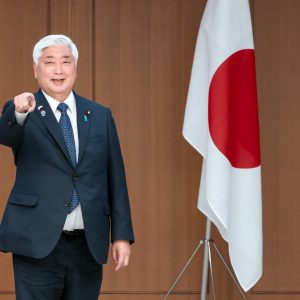Iranian-Pakistani air strikes create new geostrategic realities
A closer look at the unprecedented hostilities and the wider implications for regional stability
By Iftikhar Gilani
Following the tit-for-tat airstrikes on militant groups in the Balochistan-Sistan region, Pakistan and Iran have decided to ease tensions after Pakistan’s caretaker Foreign Minister Jalil Abbas Jilani held talks with his Iranian counterpart Hossein Amir Abdollahian.
The two foreign ministers underscored the importance of cooperation and synchronization of efforts at the operational level, with special emphasis on counter-terrorism and other mutual concerns. They also pledged to de-escalate tensions.
According to experts, the calls for restraint from China and Russia contributed to the de-escalation. Both powers did not want to divert attention to another front as they had their hands full with Ukraine, Syria and Palestine.
However, the sudden escalation between the two countries brought the Balochistan-Sistan region, which stretches between the two neighboring countries, back into the spotlight.
The last time this region was mentioned at an international forum was in the joint statement issued at the end of the meeting between Pakistani Prime Minister Yusuf Raza Geelani and his Indian counterpart Manmohan Singh in the Egyptian resort of Sharm el Sheikh in July 2009.
The joint statement said the two leaders had agreed that the two countries would share credible and actionable intelligence on future terrorist threats in real time. Prime Minister Gilani mentioned that Pakistan had some information about threats in Balochistan and other areas.
The recent hostilities began with Iranian airstrikes on Pakistan’s Balochistan province, resulting in casualties, including two children. Iran claimed to have attacked strongholds of the Sunni militant group Jaish al-Adl, which seeks independence for Iran’s Balochestan-Sistan province.
In response, Pakistan carried out precision military strikes on suspected separatist hideouts in the Iranian province. These attacks resulted in casualties and increased tensions between the two countries.
The Balochistan region, characterized by its arid and mountainous terrain, straddles Pakistan, Afghanistan, and Iran. It is home to the Baloch ethnic minority, who are predominantly Sunni Muslims. Most of this region is located in the southwest Pakistani province of Balochistan, the largest province in Pakistan in terms of area with over 14.8 million inhabitants.
Several separatist armed groups are active in the Balochistan region, both in Pakistan and Iran. In particular, the Baloch Liberation Army (BLA), founded in 2000, is responsible for numerous attacks on Pakistani interests and Chinese nationals. Another group, the Balochistan Liberation Front (BLF), founded in 1964, was also active in Iran and Pakistan and carried out attacks on Pakistani and foreign targets.
Jaish al-Adl, founded in 2012, operates on both sides of the Iran-Pakistan border and has attacked Iranian security and military forces in the past.
The latest escalation between Pakistan and Iran is highly unusual as it comes amid growing tensions in the Middle East, where Iran’s allies and proxies are embroiled in conflicts across the region.
According to Anne Patterson, a former U.S. deputy assistant secretary of state who also served as ambassador to Pakistan from 2007 to 2010, Baloch separatists have always been opaque to outsiders, and this is even more true for organizations like Jundullah and its offshoot Jaish al-Adl.
She acknowledged that U.S. influence over Islamabad had waned over the years and advised Washington to use this incident to restore confidence in Pakistan rather than ceding leadership to China.
Shuja Nawaz, Pakistani-born author and founding director of the Atlantic Council’s South Asia Center, pointed out that as early as 2007, media reports had indicated covert US support for Jundullah or Jaish al-Adl against Iran. He said that Pakistan was alleged to have played a role in the capture of their leader Abdolmalek Rigi by Iran in 2010.
“If Iran believes that the United States is covertly supporting Jaish al-Adl, this could explain Tehran’s decision to attack Pakistani territory,” he said.
An important question, however, is why Pakistan allowed Jaish al-Adl to operate in its province of Balochistan. An equally important question is why Iran allowed Balochistan nationalists to use its territory as a sanctuary and suspected Indian agents to conduct operations against Pakistan from Iranian Balochistan.
In 2017, Pakistan claimed to have arrested former Indian naval officer Kulbhushan Sudhir Jadhav in Balochistan on charges of terrorism and spying for Indian intelligence.
However, India claimed that he had been abducted from the Iranian port city of Chahbahar. An Indian passport in the name of Hussain Mubarak Patel was found in his possession when he was arrested.
Carmiel Arbit, Fellow at the Atlantic Council, pointed out that despite the provocations, the USA and Israel have not yet responded to Iran with attacks on Iranian territory.
“Pakistan has now crossed that line,” she wrote on the Atlantic Council website.
It remains to be seen whether Israel and the U.S. will follow suit in the event of Iranian attacks on their interests in the region.
It remains uncertain whether these hostilities will lead to a full-blown conflict or whether both nations will seek a peaceful solution to the long-standing problems in the Balochistan region. Unlike other neighbors, Iran has an influence on Pakistan’s domestic politics, where it arouses sympathy among a section of society.
Both countries need to address this border region, as long-standing grievances, ethnic and religious dynamics and geopolitical interests are fueling insurgency on both sides of the border. Efforts to de-escalate and find a peaceful solution will be crucial to prevent further instability in this volatile region.







